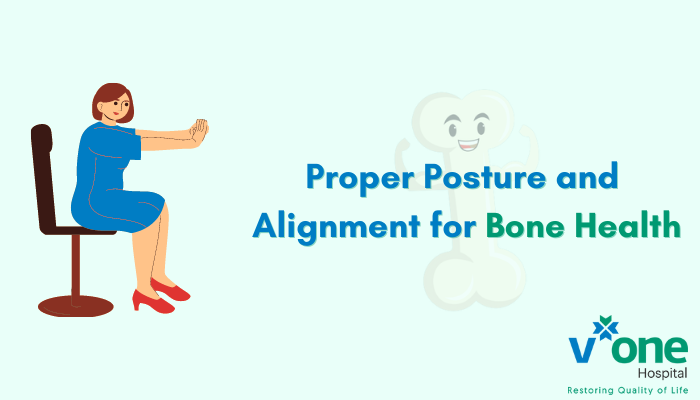A Backbone for Bone Health: The Importance of Good Posture
Have your elders ever told you to stop hunching over and adopt a better posture? It may be annoying to hear it, but as it turns out, there is a lot of truth to the advice. Maintaining good posture and proper alignment is essential for your overall health, especially your bone health.
Your bones provide support and structure to your body, and without proper posture and alignment, you may be putting unnecessary stress and pressure on your bones, leading to a higher risk of fractures, osteoporosis, and other bone-related conditions. Good posture plays a key role in bone health, and you can work to improve both.
What is Proper Posture and Alignment?
Your posture is the position of your body when you stand, sit, or lie down. It is essential to maintain good posture to avoid unnecessary stress on your bones, muscles, and joints. Proper alignment refers to the correct positioning of your bones and joints, so they are in their natural, healthy positions. When you are aligned properly, it helps distribute your body weight evenly, reducing stress on specific areas and preventing joint and bone pain.
How Do Your Posture and Alignment Affect Bone Health?
Good posture keeps your muscles, tendons, and ligaments working properly, allowing them to effectively do their job. But when they aren’t functioning properly, they may not be able to provide proper support for all the bones in your body.
Maintaining good posture and proper alignment is one of the best things you can do to keep your bones healthy. Poor posture puts unnecessary pressure on your bones and joints, leading to premature wear and tear. Over time, this can lead to osteoporosis, a condition in which your bones become fragile and brittle. Osteoporosis then increases your risk of fractures, especially in the spine, hip, and wrist.
Poor posture can also lead to muscle weakness, which can further increase your risk of falls and fractures. It can also cause neck and back pain, headaches, fatigue, muscle imbalances, reduce flexibility, joint pain, arthritis, and reduced mobility. Maintaining good posture and alignment can help prevent these issues and keep your bones healthy and strong.
How to Improve Your Posture (and Alignment)?
Working on your posture and alignment can help reduce your risk of bone-related conditions and improve your overall health. But you don’t need a gym to improve your posture. Here is what you can do to improve your posture and alignment at home:
- Stand up straight: Keep your shoulders back and your head level. Avoid slouching or leaning to one side.
- Sit properly: Sit with your back straight, and your feet flat on the floor. Use a chair with good back support to maintain proper alignment.
- Use good body mechanics: When lifting heavy objects, bend your knees and keep your back straight. Use your legs to lift the weight, not your back.
- Exercise regularly: Regular exercise helps strengthen your bones and muscles, improving your posture and alignment.
- Wear comfortable shoes: Wearing shoes that provide good support can help improve your posture and alignment.
- Get regular check-ups: Regular check-ups with your doctor or a physical therapist can help identify and correct any posture or alignment issues before they become more severe.
Your genetics, lifestyle, and habits together can influence your posture. Maintaining good posture and alignment requires conscious effort and practice. And although it can take time to develop new habits and undo old ones, it is certainly possible. With regular exercise and a few lifestyle changes, you can improve your posture and strengthen your bones and muscles. You should also ditch those heels and go for more supportive shoes instead.
Good posture and alignment are often a window into your bone health, but they also play a key role in affecting your bone health. Poor posture and alignment can have long-term consequences for your bone and joint health. Poor posture doesn’t just look bad, it can put unnecessary stress on your bones and joints, and increase your risk of fractures and osteoporosis, along with causing reduced lung function and increasing the risk of respiratory issues. It can also cause muscle imbalances, cause joint pain, and reduce flexibility.
Maintaining good posture and alignment can help prevent these issues and keep your bones healthy and strong. By following the tips mentioned above and making healthy lifestyle changes, you can improve your posture and alignment, and reduce your risk of bone-related conditions. Taking steps to improve your posture and alignment now can help prevent these issues and keep you healthy and active for years to come.

